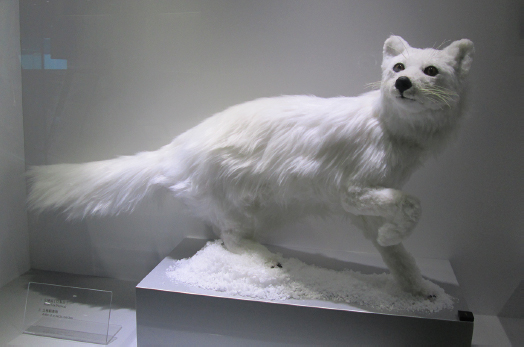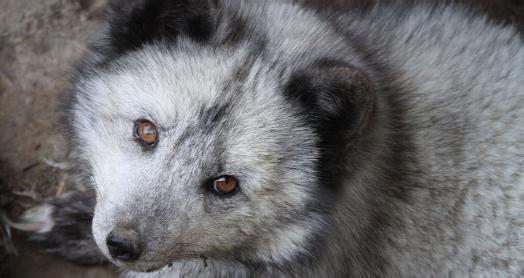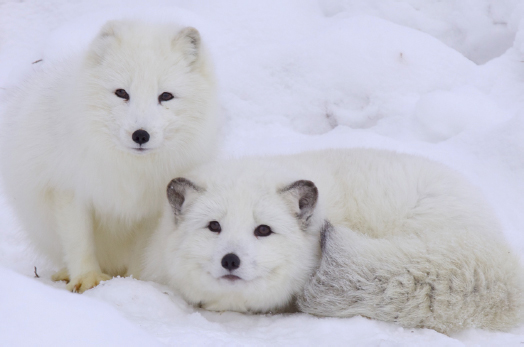A Fantastic Fox

With its shock of white, fluffy fur, the Arctic fox is instantly recognizable – and perfectly adapted for one of the harshest environments on the planet. Visitors to the Jockey Club Museum of Climate Change can now examine an exhibit of the cunning carnivore, complete with its exquisite coat.
That coat may look cute, but it serves an essential purpose. In winter, the foxes have beautiful, thick white fur that matches the bleak snowscape of the season. They even have fur on their paws, while their compact muzzle, short legs and small ears all help the canine conserve heat. The lush tail or “brush” acts as a vital piece of insulation when the animal is at rest.
The fox is incredibly hardy, able to withstand frigid temperatures that in winter fall as low as -50ºC. To get some respite from the cold, it lives in an underground burrow. During a blizzard, it will even tunnel into a snow bank and make a pocket for itself, for warmth and shelter.

But the fox is not always white. In the summer months, it sheds its winter cloak and turns brown or grey, aside from a white belly and tail. This helps it blend into the summer tundra, with its rocks and plants.
The fox hunts rodents such as lemmings, voles and squirrels, and will also eat birds, fish and even berries. Food is extremely scarce during the winter, when the fox often trots along behind the Arctic’s apex predator, the polar bear, looking to snatch scraps from its kills.
Its pointed ears give it excellent hearing, swiveling to the front to allow it to track the sound of prey scurrying through tunnels under the snow. Its preferred method of attack is to hone in on the animal, then leap into the air and pounce, thrusting its snout straight through the snow onto the prey beneath.

Mother foxes, slightly smaller than the males, give birth to a litter of between five and nine pups – and sometimes as many as 14. The fox is responsible as well as smart – both parents help raise the young.
But the fox is under threat. They take to the sea ice in the depths of winter to scour for seal carcasses. There is less competition from other competitors on the ice, and food is easier to find, so this source of nutrition is vital. Scientists at the University of Alaska Fairbanks tracked 14 young Arctic foxes over their first winter, and found that the three animals who took to the sea ice survived, while the 11 that stayed on land all died.*
The decline in sea-ice cover in recent years therefore presents a major challenge to the fox’s survival. The three surviving foxes wandered as much as 1,700 miles and spent up to five months on the sea ice, which is forming later each year and covering less and less of the ocean.
by Alex Frew McMillan






